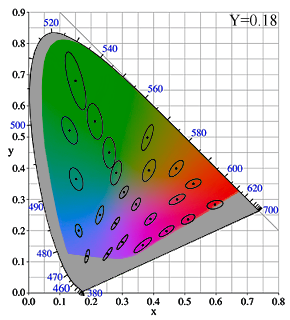
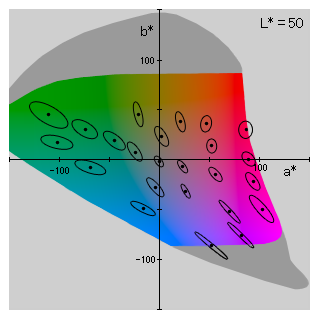
* Illuminant C is assumed for the Lab space above.
 |
 |
|
An ellipse represents the color difference discrimination limit (referred to as MacAdam's ellipse).
The ellipses are enlarged.
In the xy color space, the size of the ellipse varies considerably from place to place.
On the other hand, in the Lab color space, the difference in the size of the ellipse is small, showing that the color space is much more uniform. * Illuminant C is assumed for the Lab space above. |
|
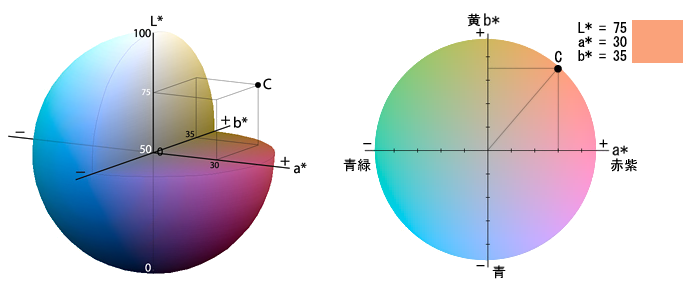
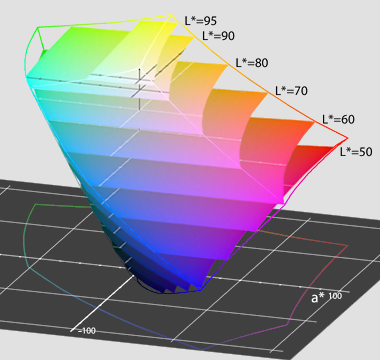 |
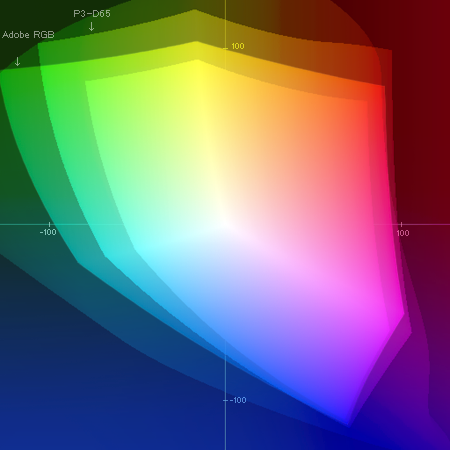 |
| Color gamut reproducible in sRGB (projection in the L*a*b* space) | The color gamut of sRGB (innermost), P3-D65 and Adobe RGB as the top view in the L*a*b* space. The outer surface is the color gamut of the optimal color solid (MacAdam limit). |
 |
|
| Munsell color wheel |
|
 |
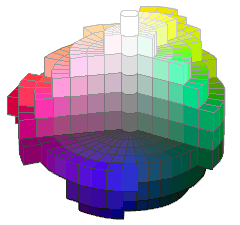 |
| Munsell color solid (Solid Type) |
Munsell color solid (A part) |
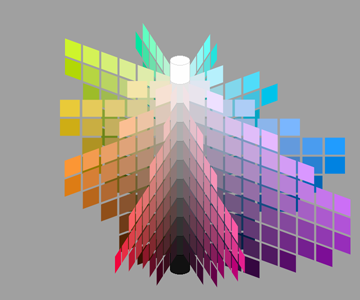
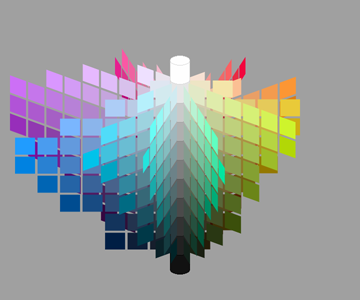 |
| Munsell color solid (Tree type) |
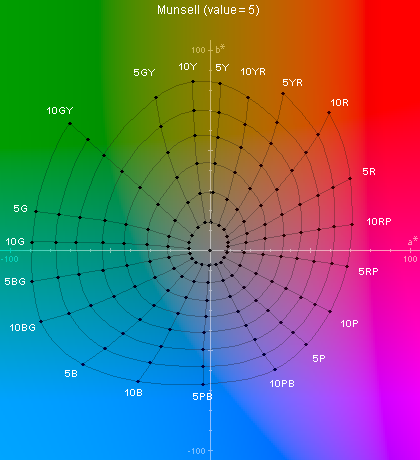 |
|
Munsell colors with value 5 plotted in the L*a*b* space. Concentric lines represent saturation 2, 4, ... from the center. |